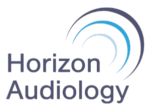How to Decide What Hearing Aid is Right for You
If you’re one of the estimated 15% of adults in the United States that experiences hearing loss, then you might be considering using hearing aids. You may be presented with multiple options depending on your type and severity of hearing loss, as well as your lifestyle. Here are a few questions you can ask to better understand the types and styles of hearing aids you have to choose from:
What types of hearing aids are available?
There are two common types of hearing aids. One type is referred to as “in-the-ear” or ITE, because the entire device sits in the ear canal. They are typically custom fit to your ear, and depending on the style, can sit very deep in your ear, or closer to the outside. The other common type of hearing aid is “behind-the-ear” or BTE. BTE devices sit around the top or behind your ear and have tubing that connects to a receiver or earmold in your ear canal.
What hearing aid styles work for my severity of hearing loss?
Depending on the severity of your hearing loss, you may be presented with specific styles that are better suited to help you.
For mild to moderate hearing loss: Most styles of hearing aid will be available to you to help your hearing, but you may consider more of the ITE styles. “Invisible-in-the-canal” (IIC) and “completely-in-the-canal” (CIC) devices are options that can be more discreet, while still giving a good sound quality.
For severe to profound hearing loss: While some styles may not be able to give you hearing help you’d like, there are a lot of great styles and technologies that can help with severe to profound hearing loss. BTE devices that connect to an earmold in your ear canal are a good option, as well as ITE devices that are fitted in the canal.
What if I’m concerned about how my device looks?
It is natural to be concerned about how your device is going to look in or around your ear and is a valid concern that your hearing healthcare provider will take seriously. Most manufacturers offer devices in multiple colors with some even matching your skin tone. Whether or not you’re looking for a more discreet device may also impact your decision on the style of your hearing aids. Many ITE hearing aids can be hard to see in your ear, and there are smaller BTE options that can also be well hidden behind your ear.
Your hearing healthcare provider will be there to help you choose the best hearing aids for your hearing loss and lifestyle. It can seem overwhelming to have so many options but knowing what’s important to you and having the right guidance will help you be on your way to hearing better.
Ready to start treating your hearing loss? Contact our office to schedule your hearing test.

